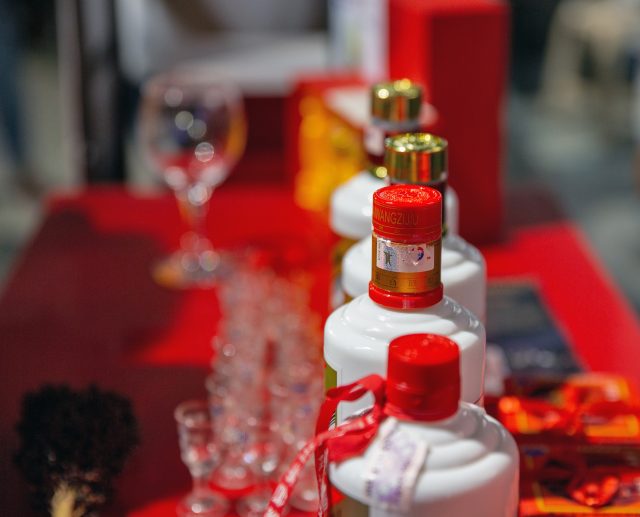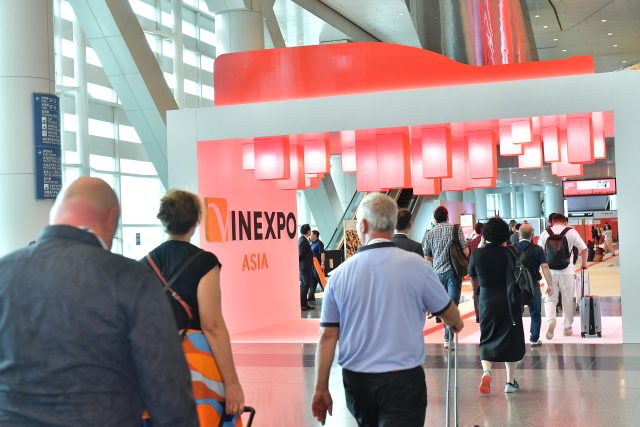This website uses cookies so that we can provide you with the best user experience possible. Cookie information is stored in your browser and performs functions such as recognising you when you return to our website and helping our team to understand which sections of the website you find most interesting and useful.
Vinexpo Asia 2024: the hot topics
Hong Kong toasted the return of Vinexpo Asia this week after a six-year hiatus. Eloise Feilden finds out the trends which took top billing at the exhibition.

Returning to Hong Kong following the Singapore debut of Vinexpo Asia last year, show organiser Vinexposium was expecting over 10,000 trade visitors from 60 countries to attend over the three days. Official attendee figures have not yet been released, but the busy halls of the HKCEC played host to 1,032 wine and spirits producers from 35 exhibitor countries.
Here, we break down all of the key topics on the lips of visitors, exhibitors and speakers alike over the last three days.
Baijiu is boss
In a session titled ‘Status Spirits – Perpetual Progress or Bursting Bubble?’, IWSR Drinks Market Analysis director of consulting Luke Tegner broke down the state of the world’s super premium spirits sector.
Defined by IWSR as any spirits priced at US$100+, status spirits is a niche category, but by no means one to ignore.
High value spirits’ share of the market has almost doubled from 2017 to 2022, from 8% to 15% globally.
Baijiu is an essential part of this story, making up 85% of the status spirits segment. The Chinese liquor is worth US$212 bn, according to IWSR figures.
Volume sales are dropping in the lower end of the price range, but baijiu has seen major growth in the super premium segment. Tegner said it was “quite extraordinary what prices are being achieved by baijiu” in today’s market. And these results, despite it being “effectively one spirits category in one market”.

He noted that there is still a question surrounding whether baijiu can stay relevant to younger consumers, who are less drawn in to the category at the lower price end. But big brands are working hard in the digital space to up engagement. Last year, Luckin Coffee sold 100 million yuan (£10.9m) worth of coffees laced with baijiu brand Kweichow Moutai in a single day.
The coffee chain, which has 10,000 stores across China, including many in Beijing and Shanghai, partnered with alcoholic beverage giant Kweichow Moutai to create a latte infused with the baijiu.
Strong sales in the high price segment should be an “impetus” to push baijiu sales elsewhere, namely duty free spaces, Tegner said.
Besides baijiu, for which China is by far the biggest player, the rest of Asia is showing strong demand for status spirits across different categories, particularly whisky. The region is showing the biggest growth of any worldwide.
A hop, skip and a jump across the border
Ahead of the show, Vinexposium CEO Rodolphe Lameyse told db that China is now the major focus for the exhibition in Hong Kong, while its bi-annual show in Singapore caters more to the Southeast Asian markets. The novelty of this year’s show, according to Lameyse, is going to be reconnecting with the Chinese market.
A keen focus on China was therefore to be expected, and the show did not disappoint on this front. “Asia and specifically China proves to be a key market for our industry and we intend to play a crucial role in this commercial momentum,” Lameyse said at the exhibition’s opening ceremony on Tuesday.
China is a highly strategic market, with 19% growth in wine and spirits expected by 2027, according to IWSR. It is also among the major exhibitors at Vinexpo Asia 2024, along with Italy, Spain, Australia, the United States, Chile, New Zealand and Japan.
Don St Pierre, co-founder of ASC Fine Wines and AdaptEdge, spoke at a roundtable addressing the future of China’s wine market. He said “the narrative that China is somehow no longer relevant” is totally false.
Hong Kong is therefore an important hub for entry, or re-entry for some, into this essential market. It acts as the gateway to the Greater Bay Area (GBA), which boasts a population of 87 million and has a decisive influence on Asia. GBA is China’s fastest growing region, with both the youngest and the highest educated population in the country.
Hong Kong’s influence
Philippe Chan, general manager, YouGov Greater China, believes that Hong Kong is uniquely positioned to drive development in the GBA market. He dubbed Hong Kong a brand building market during a discussion called ‘Hong Kong and The Greater Bay Area: Consumer Trends, Challenges and Opportunities for the Industry’.
Jaime Martin Chocano, managing director – North Asia of Edrington, agreed with the positive sentiment, arguing that the luxury purchase influence of Hong Kong and Macau means that it’s the best place to be for investment in China. The lack of duty on wine keeps the market relevant, with a high proportion of wine imported into Hong Kong then exported on to other markets in Asia.
Mattieu Thibaut, MD of Corney and Barrow, who was also on the panel, said that the beauty of Hong Kong is how easy it is to “hop in” to China, reinforcing its power as a hub for wine and spirits.
Aussie uplift

Considering China’s relevance, it was no surprise to see a buzzing Australian presence at Vinexpo Asia this year. Tariffs on Australian wine in China were lifted on 29 March, and a number of Australian producers had taken the gamble and signed up for the Hong Kong fair ahead of the news.
Big players including the likes of Yalumba were present at the show, attending with the primary purpose of seeing their importer, ASC Fine Wines, face-to-face for the first time in years.
However not all producers had China on the brain. Tasmania-based Handpicked Wines, which owns the House or Arras brand, was keen to develop relationships with importers in South Korea and Japan, and met with its distributors in Thailand and other Southeast Asian markets, suggesting the show was not just used as a route to the Chinese market.
French fancy
As a French company, it is no surprise that Vinexposium secured French producers as a key demographic. Exhibitors from the European nation made up a third of the total this year. France is responsible for the majority of wine imported into China by volume, making Hong Kong an important hub for trade between the two countries.
France’s Ambassador to China Bertrand Lortholary attended the exhibition’s opening ceremony, and cited “the power of wine to build bridges” between the two countries.
But the future looks rocky for the two countries. The HKCEC, where the exhibition is taking place, was buzzing with conversation about rumours that China could be about to target European Union wine exports following EU anti-subsidy investigations into Chinese companies.
According to reports, the move could jeopardise the US$800 million wine trade between the EU and China, which official data suggested is equal to almost 70% of China’s total wine imports last year.
Key EU wine exporters to China, including France, Italy, Spain, Germany, and Portugal are set to be affected, with France alone accounting for almost half of the wine exports.
And all this just as investigation into European brandy was beginning to cool.
Evenso, 2024 is the official year of tourism between France and China, and as a key trading hub for the Chinese market, Hong Kong remains an essential stepping stone in the journey between the two countries, a fact which Vinexpo Asia was keenly aware of.

